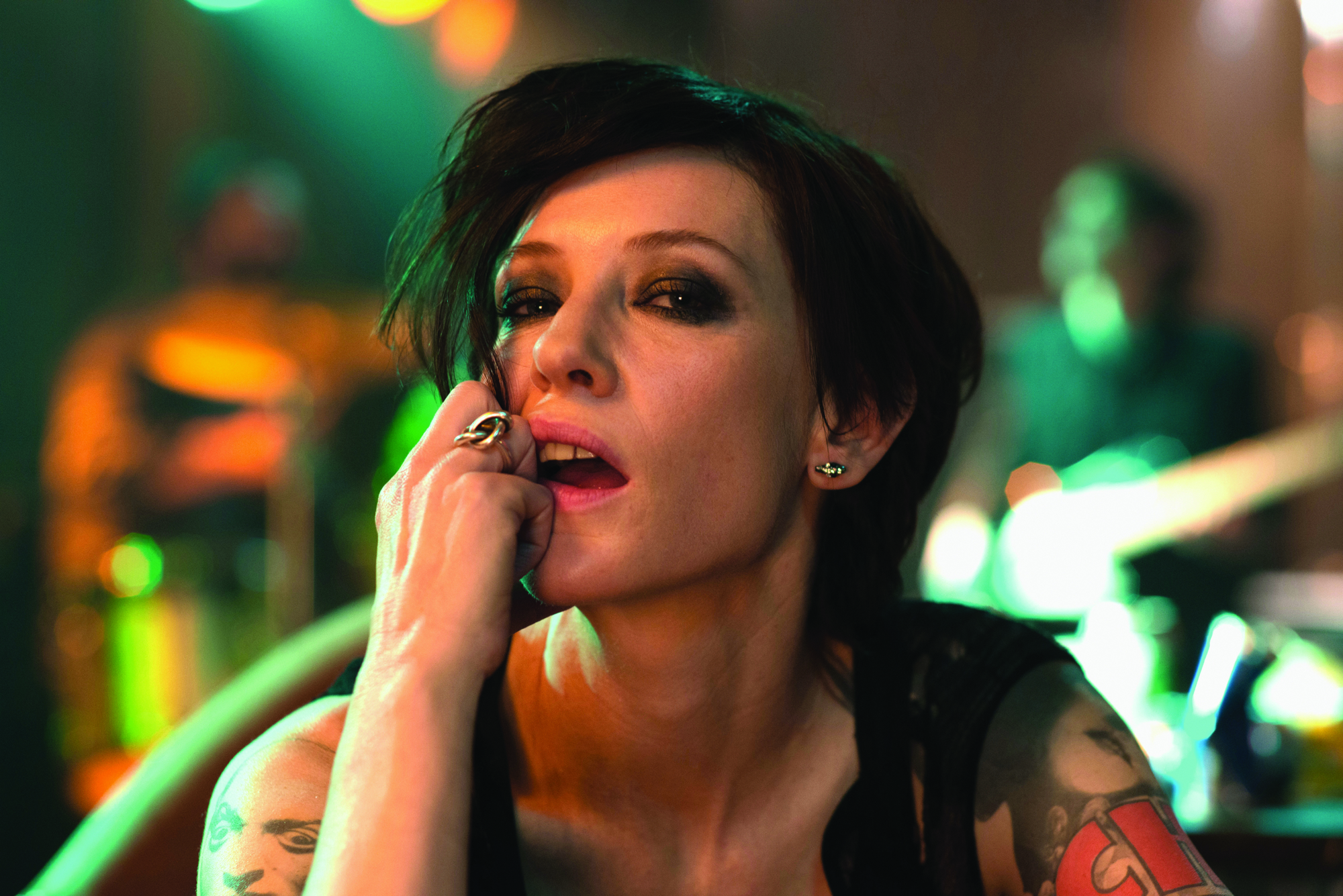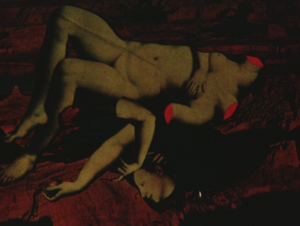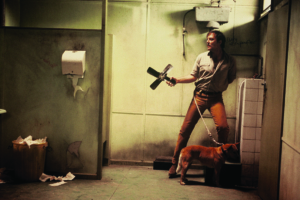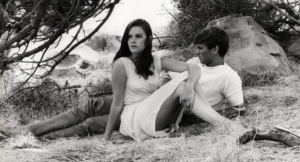Nothing is original. Steal from anywhere that resonates with inspiration or fuels your imagination. Devour old films, new films, music, books, paintings, photographs, poems, dreams […] Select only things to steal from that speak directly to your soul. If you do this, your work (and theft) will be authentic. —Jim Jarmusch[1]Jim Jarmusch, ‘Things I’ve Learned: Jim Jarmusch’, MovieMaker, 5 June 2013, <https://www.moviemaker.com/archives/series/things_learned/jim-jarmusch-5-golden-rules-of-moviemaking/>, accessed 20 February 2018.
Practising what she preaches, a primary school teacher (Cate Blanchett, in one of thirteen roles) ‘steals’ Jarmusch’s words, using them to urge her students to borrow ideas from wherever takes their fancy. Patrolling the rows of desks in her classroom, she delivers an earnest monologue comprising various manifestos from the world of cinema. Closing off her reference to Jarmusch with the filmmaker’s own quotation of Jean-Luc Godard, still one of film’s most influential auteur-philosophers, she reminds the class, ‘It’s not where you take things from – it’s where you take them to.’ It is a meticulously calibrated scenario that mines humour and poignancy from the spaces between language, context and performance. The overarching sensibility of openness and curiosity on display informs each of the thirteen components of Manifesto (Julian Rosefeldt, 2015). Indeed, Jarmusch’s philosophy of ‘authentic theft’ is gloriously alive in every frame.
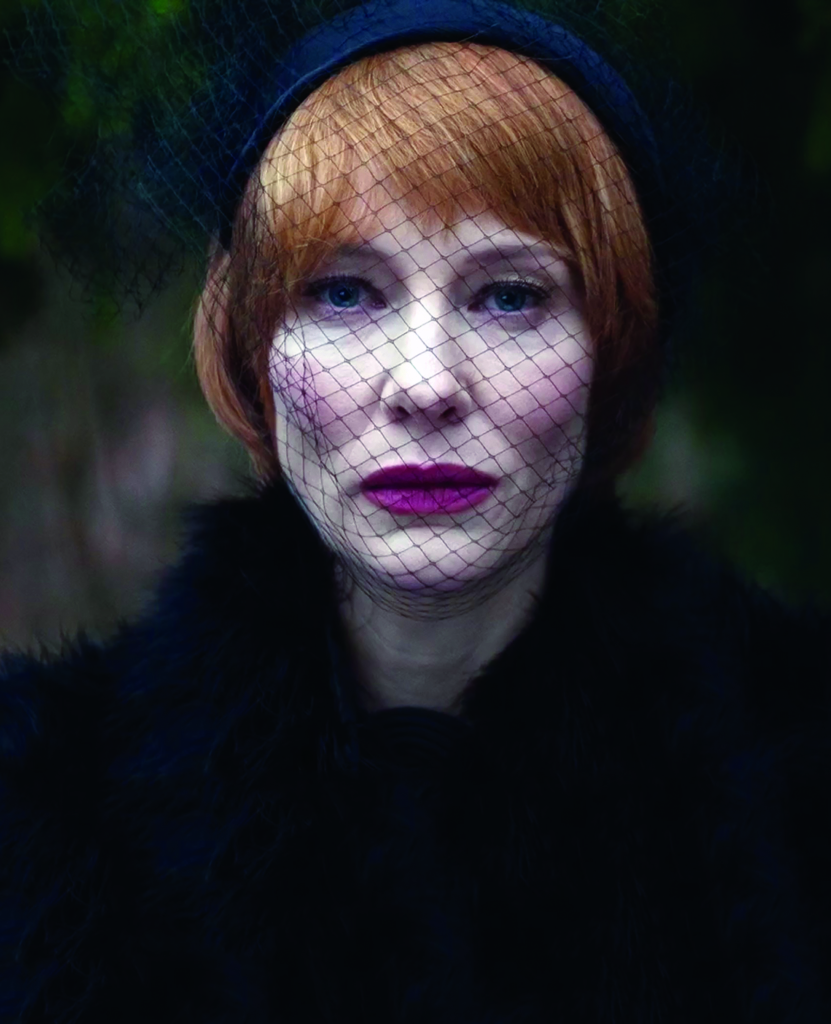
Originally conceived as a multichannel art installation, Manifesto was created as a nonlinear walk-through experience within a gallery environment. The work was jointly commissioned by the Australian Centre for the Moving Image (where it premiered in December 2015), the Art Gallery of New South Wales, the Nationalgalerie – Staatliche Museen zu Berlin and the Sprengel Museum Hannover, with additional production support from the Burger Collection Hong Kong and the Ruhrtriennale. The subsequent cinematic version cuts together the different scenarios and repositions the spectator; however, both works demand an active mode of viewing (and, perhaps even more crucially, listening). In an interesting inversion, it is the language that repeatedly inflects the images, producing strange and startling new angles as thoughts are layered over scenes to produce a rapidly evolving dialectic.
Eschewing the reverence for the ownership of ideas usually associated with manifestos, Rosefeldt’s film sets out to cast off the historical weight that can threaten to close off artists’ thoughts from the present, hermetically sealing them in the time and place of their origin. Manifesto offers an opportunity for these ideas to be appraised anew, freed from their academic significance as art-historical artefacts and reinvigorated as poetic texts, rapturous, powerful and often filled with adolescent yearning for new artistic frontiers.
The film bridges the terrain between then and now via this process of audiovisual dislocation … to dissolve any clearly delineated boundaries separating contemporary creative practice from the manifestos of the past.
The ‘collage’ process – whereby snippets of different manifestos are stitched together to form what Rosefeldt calls a ‘manifesto of manifestos’[2]Julian Rosefeldt, quoted in Sarah Tutton & Justin Paton, ‘Julian Rosefeldt Interview’, Australian Centre for the Moving Image website, 20 November 2015,<https://2015.acmi.net.au/acmi-channel/2015/julian-rosefeldt-interview/>, accessed 20 February 2018. – makes Manifesto a fascinating example of meta film art. A broad definition of ‘meta’ as an adjective pinpoints its ‘pertaining to or noting an abstract, high-level analysis or commentary, especially one that consciously references something of its own type’.[3]‘Meta’, Dictionary.com, <http://www.dictionary.com/browse/meta>, accessed 20 February 2018. Here, we have an artist who actively draws on the thoughts of other artists from a range of disciplines, and assembles their voices into new monologues. Each monologue is then placed in a contemporary context and performed by Blanchett as a different character. The characters cut across class, nationality and even gender. Each scenario appropriates manifestos from a particular school of thought or artistic movement; these include futurism, surrealism, dadaism, pop art, conceptual art and film philosophy.
The effect is utterly mesmerising. Provocative and intellectually rigorous, the new monologues – thanks to Blanchett’s lucid delivery – are, at their best, pitch-perfectly balanced; the intersection of characterisation, mise en scène and meticulous camera work reframe the original manifestos and afford them compelling new nuances. Manifesto is a shrewdly subversive meta work that fittingly resists straightforward classification. It could be approached as, equally, a work of conceptual art, an experimental film, a sublimely virtuosic acting masterclass or a representation of avant-garde manifestos.
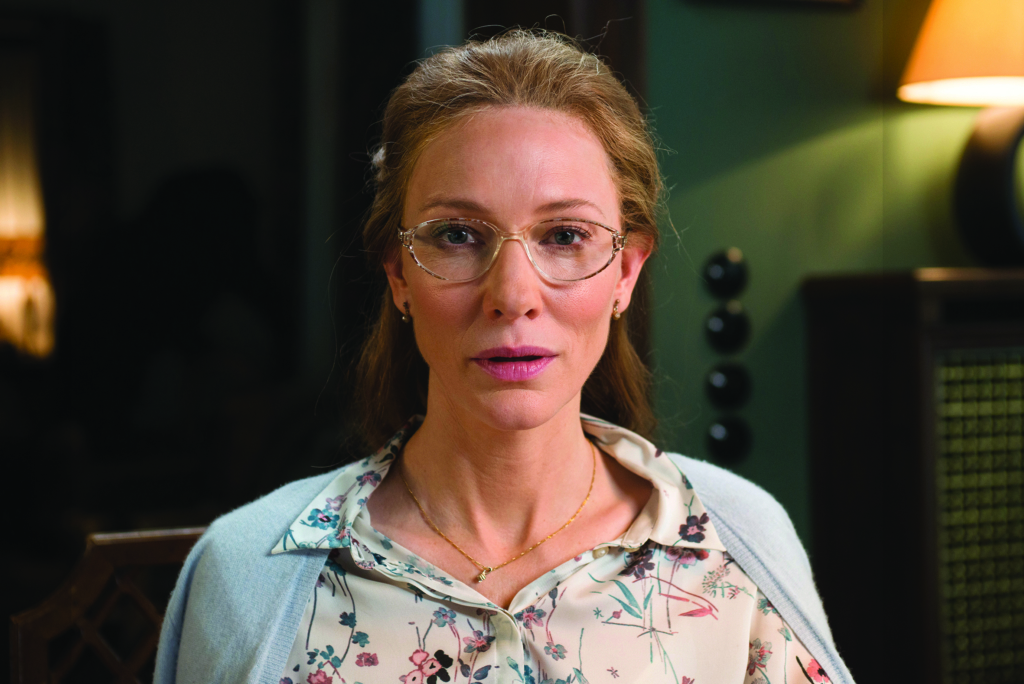
In one scenario, Blanchett plays a poor Scottish factory worker presiding over the incineration of tons of garbage. The accompanying theories about the transformative power of architecture are undercut by stark industrial settings and by images of waste and detritus. With its bleak aesthetics, the sequence recalls the social realism of Brit Grit cinema. This is just one of a range of generic influences taken up by Rosefeldt in his film. The representation of class here brings the language of the assembled manifestos into even sharper relief; in the gaps that open up between word and image, we sense a collision between creative idealism and the pragmatic reality of urban existence, the waste of the heaving multitudes. Or perhaps we are observing creation and destruction hand in hand, informing and dismantling each other, one as vital to the other as breath. Such a dialectic is suggested by architect Bruno Taut’s manifesto; in voiceover, the factory worker quotes him: ‘Today more than ever we believe in our will, which creates for us the only life value. And this value is: everlasting change.’
Another particularly resonant scenario opens with a lateral tracking shot of hanging studio cameras in a newsroom. The soundscape is dominated by indeterminate metallic clanging and fizzing that produce an unnerving counterpoint to the image. The disquieting combination of sound and image defamiliarises the location, foregrounding the sense of dislocation that recurs in Rosefeldt’s work. This forces the spectator into an uncanny space in which mundane objects and locations are charged with a sense of ambivalence that produces unease. This technique is incredibly effective at reintroducing the sense of open curiosity that Manifesto asks of us. In order to reappraise these historical texts, the film bridges the terrain between then and now via this process of audiovisual dislocation. This emphasises uncertainty and helps to dissolve any clearly delineated boundaries separating contemporary creative practice from the manifestos of the past. What emerges is an abstract meta-dialogue that questions the function of the artist both in the past and in the present. It is a startlingly provocative illustration of thinking through film.
The disjuncture between these overtly masculine texts and Blanchett’s gender facilitates yet another opening-out in Manifesto: a means of wryly interposing new inflections, in the spirit of possibilities, rather than closed-off absolutes.
The newsroom sequence is primarily founded on the manifesto of conceptual artist Sol LeWitt. While the tracking shot continues to capture the studio’s cameras, Blanchett’s voiceover quotes LeWitt: ‘Ideas can be works of art.’ Eventually, we settle on a human subject – an American anchor who is preparing to go on air. The voiceover continues to cite LeWitt, intoning, ‘Once given physical reality by the artist, the work is open to the perception of all, including the artist.’ This is an idea that underpins all of Manifesto: the opening-out of creative philosophies and the liberation from the tyranny of ownership.
Extending the self-reflexivity signalled by these cameras shooting cameras, both the anchor and the location reporter share Blanchett’s first name (‘Back to you, Cate’). The dubious authenticity of contemporary mainstream news services becomes a kind of micro-trope that channels the tensions explored in LeWitt’s thesis – those between speed and truth, knowledge and narcissism. The absurd doubling (or even trebling) of Cates nods to the closed circle of looped feedback so central to our contemporary digital condition; Manifesto humorously draws attention to the seductive trap of artificiality that replicates endlessly, creating a vacuum of originality or authenticity. It is as though the source material was written with the cyber age in mind; as with so many of the selected manifestos, the thinking is astonishingly prescient.
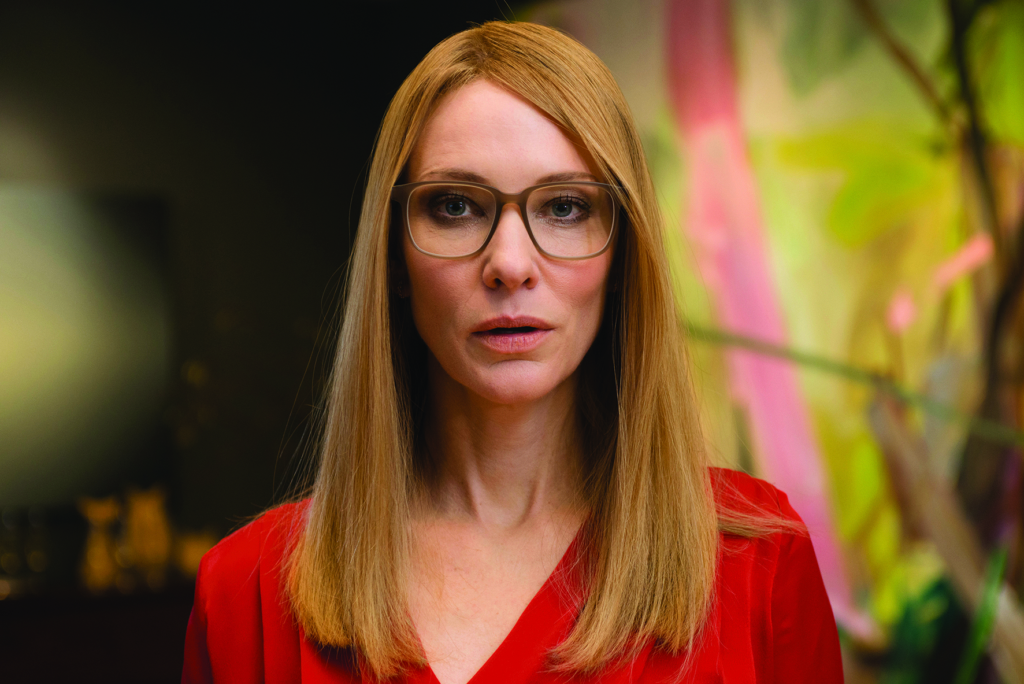
This scenario also explores the questionable authority of the speaker (whether an artist, critic, philosopher or news presenter) and the passive receptiveness of the audience. Locating the LeWitt monologue within a newsroom doesn’t reinforce or even extend the manifestos; rather, it permits Blanchett’s characters to ‘become’ them. At one point, reporter Cate breaks into song, delivering her piece to-camera in a sombre tone. This device again ruptures conventions only to draw attention to their limitations. Quoting LeWitt, she sings that conceptual art will sometimes ‘infer a paradoxical situation – such as logic versus illogic’. When the heavy storm she appears to be standing under is revealed to be fake, the reassuring glimmer of logic gives way under the irresistible force of disruption and transference; the scenario itself becomes a slippery, obtuse work of conceptual art.
Here, perhaps most lucidly, Manifesto literally embodies its source texts. As Rosefeldt explains:
The main idea for Manifesto was not to illustrate the particular manifesto texts, but rather to allow Cate to embody the manifestos. Until the last third of the twentieth century there were only a few manifestos written by women artists. Most were written by men and they are just bursting with testosterone. So I thought it was thrilling to let them be spoken today by a woman.[4]Rosefeldt, quoted in Tutton & Paton, op. cit.
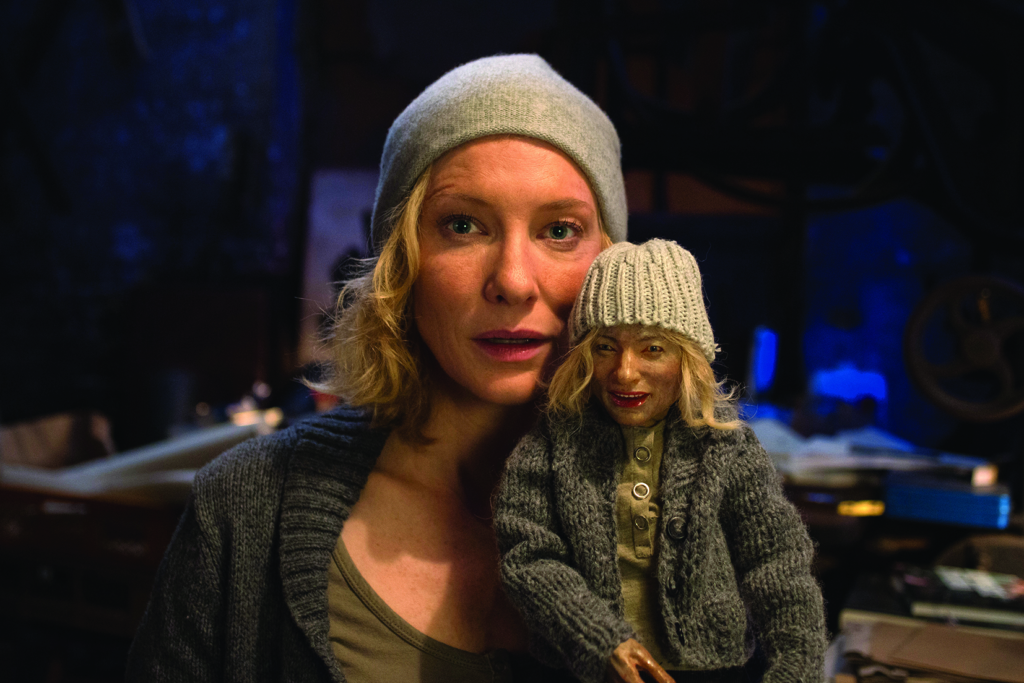
The disjuncture between these overtly masculine texts and Blanchett’s gender facilitates yet another opening-out in Manifesto: a means of wryly interposing new inflections, in the spirit of possibilities, rather than closed-off absolutes. Whereas the original texts comprise bold assertions with exclamation marks and full stops, Manifesto is all about question marks. What happens if incongruous settings and images are merged with repurposed manifestos? By experimenting with film and spoken language in this way, Rosefeldt ruptures conventions in a way that forces the spectator to actively negotiate their own relationship with the work.
In stark contrast with the passive audience alluded to in the newsroom scenario, the viewer of Manifesto is expected to continually interpret and decipher. Rosefeldt consciously creates a challenging space for his audience:
I’m interested in the mechanics of the myth-making machine of cinema. But also trying to find out how the brain functions [in an] associative manner – you take A and B and the audience makes C out of it. Two things that don’t necessarily belong together sometimes give more space for yourself as a viewer than if you match everything accordingly.[5]Julian Rosefeldt, quoted in Emily Buder, ‘Manifesto: Julian Rosefeldt Threw Out “Bullshit” Screenwriting Rules to Direct 13 Versions of Cate Blanchett’, No Film School, 26 January 2017, <https://nofilmschool.com/2017/01/manifesto-cate-blanchett-julian-rosefeldt-interview>, accessed 20 February 2018.
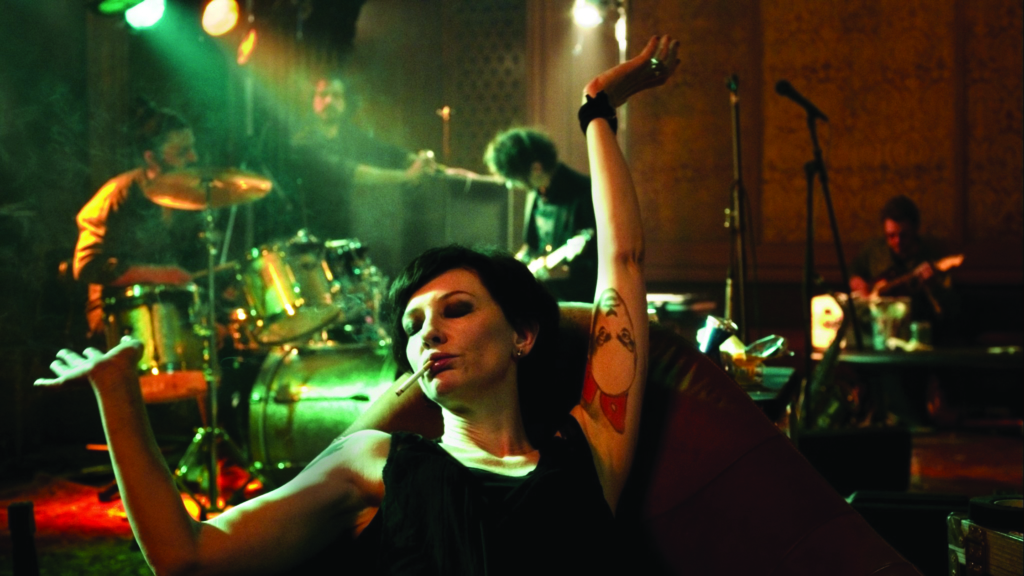
There is a sense of irreverence in the film’s bold presentation of revolutionary thinking. Crucially, the role of the thinker is decentralised in Manifesto, as a series of complementary voices is privileged over a hierarchical ordering of artists and artforms. By drawing on thinking from a range of fields, Rosefeldt creates space for a kind of democratisation. There is inherent rebellion in a manifesto; it is a call to arms for artists or fellow practitioners to embrace the philosophy of a new or evolving movement. Manifestos are also about change, about redefining the limits of an artform – whether aesthetically, functionally or philosophically, and often a combination of all three.
The different iterations of Manifesto move between the cinema space and the gallery space, and ask questions about the relationship between film, gallery and spectator. The multidisciplinary approach to art adopted by Rosefeldt chimes with the experimental, radical impetus of each manifesto he invokes. The digitisation of the image that dominates contemporary culture is turned back on itself in Manifesto, sometimes detracting from the poetry of the original texts, sometimes augmenting them. In fact, one way that Rosefeldt replicates the radical qualities of the original manifestos is by utilising the very technology that has arguably diluted modern artistic thinking. In a universe saturated with tweets, blogs and social-media feeds, the singular address of the artist has been devalued, and mental fragmentation is the dominant keynote. Competing stimuli are constantly vying for our attention, simultaneously pulling our focus in several directions. Interestingly, Rosefeldt’s original installation in some ways replicated this condition: the spectator moves between multiple screens that recall the ubiquitous screens – mobile, tablet, computer, television – that dominate twenty-first century life. The nonlinear presentation positions the spectator so that they can peripherally glimpse or hear a different character’s monologue, potentially pulling attention away from the screen in front of them.
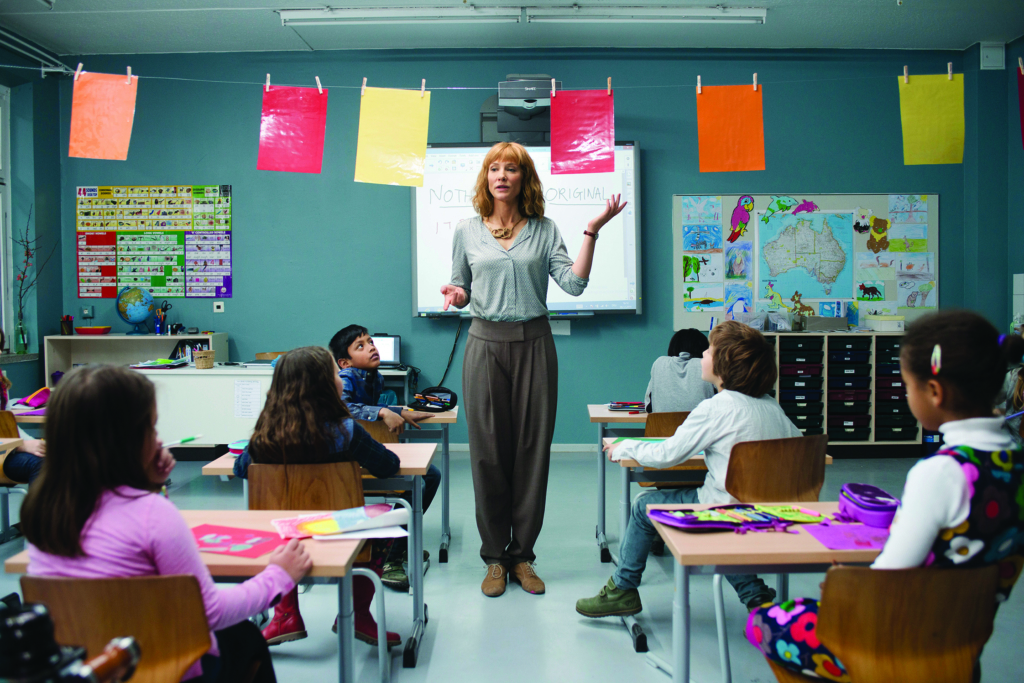
The autonomous spectator is empowered, but the chorus of competing voices in the gallery point back to the problematic flip side of democratised artistic and intellectual engagement. If all of the ideas are equally viable, then whose voice should we really be listening to? If the voice of the artist is to be reclaimed, then the relationship between artist and audience also needs to be reconnected. Manifesto offers up contradictions like these that reignite the spirit of the manifesto as a text that challenges, provokes and asks us to think deeply – and without distraction.
https://www.julianrosefeldt.com/film-and-video-works/manifesto-_2014-2015/
Endnotes
| 1 | Jim Jarmusch, ‘Things I’ve Learned: Jim Jarmusch’, MovieMaker, 5 June 2013, <https://www.moviemaker.com/archives/series/things_learned/jim-jarmusch-5-golden-rules-of-moviemaking/>, accessed 20 February 2018. |
|---|---|
| 2 | Julian Rosefeldt, quoted in Sarah Tutton & Justin Paton, ‘Julian Rosefeldt Interview’, Australian Centre for the Moving Image website, 20 November 2015,<https://2015.acmi.net.au/acmi-channel/2015/julian-rosefeldt-interview/>, accessed 20 February 2018. |
| 3 | ‘Meta’, Dictionary.com, <http://www.dictionary.com/browse/meta>, accessed 20 February 2018. |
| 4 | Rosefeldt, quoted in Tutton & Paton, op. cit. |
| 5 | Julian Rosefeldt, quoted in Emily Buder, ‘Manifesto: Julian Rosefeldt Threw Out “Bullshit” Screenwriting Rules to Direct 13 Versions of Cate Blanchett’, No Film School, 26 January 2017, <https://nofilmschool.com/2017/01/manifesto-cate-blanchett-julian-rosefeldt-interview>, accessed 20 February 2018. |
